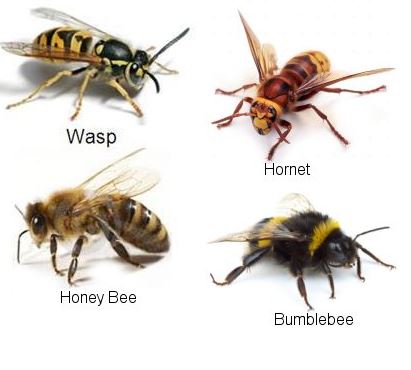
Stinging Wasps, Hornets, Yellow Jackets and Bees
Working outdoors means encountering all kinds of insects. At best, stings can cause pain and irritation, and at worst, an allergic reaction. It is important for everyone to understand how to avoid being stung, know where to locate a first aid kit, and help treat fellow workers who have been afflicted by an insect sting.
Before working at a site:
- Be aware of your surroundings and look around. Check to see if there are any visible signs of activity or a hive or nest. If you see several insects flying around, check to see if they are entering/exiting from the same hole or place. If so, it is likely a nest or a source of food.
- Do not wear perfumes, colognes, scented soaps, or powders as they contain fragrances that are attractive.
- Power tools such as lawnmowers, weed eaters and chainsaws will aggravate the insects. When using power tools, be aware that the tools may provoke the insects or in some cases, cause the insects to swarm.
If you find you are working near stinging insects, here are some tips:
- Most bees and wasps will not sting unless they are startled or attacked.
- Do not swat at them or make fast movements. The best option is to let the insects fly away on their own. If you must, walk away slowly, or gently “blow” them away. The only exception is if you have disturbed a nest and hear “wild” buzzing. Protect your face with your hands and run from the area immediately.
- Wear light-colored clothes such as khakis, beige, or blue.
- Avoid brightly colored, patterned, or black clothing.
- Tape your pant legs to your boots/socks, and your sleeves to your gloves.
- You may also wish to wear an extra layer of clothing since wasp stings are only long enough to reach through one layer of clothing.
Management of Outdoor Food Sources is Very Important
Some insects, such as the yellow jackets look for different types of food at different times of the year. In the spring, they require more protein for the new larvae and may be more attracted to other insects but also to meats and pet food. By late summer, they are more interested in high sugar foods such as fruit, candy, and pop (soft drinks).
- Empty and wash out garbage cans regularly. Fit garbage cans with a tight lid.
- Place trash cans away from the work area
- Serve sweet drinks in containers with lids and straws.
Wasps will often crawl into pop cans and can be “drunk” accidentally.
Keep your thumb over the can opening if a container with a lid is not available.

Wasps and hornets do not leave their sting in you, and so they can sting repeatedly. Honeybees can sting only once and will leave the sting (and venom sac plus some other parts) stuck in the skin at the sting site. The sting, if present, should be removed right away since the venom can still be injected for up to a minute after the bee detaches from its sting.
The CDC estimates that around 100 people die each year from allergic reactions to bee, wasp, and hornet stings. Workers who know they have these allergies should notify their supervisor and carry an (EpiPen). A medical signifier, such as a bracelet, necklace, or card that contains information about their condition is also recommended. If workers do get stung, best practice is to have someone stay with them to watch for any allergic reactions.
The area where the sting occurred should be washed with soap and water before attempting to remove the stinger. Do not attempt to remove it with tweezers or by squeezing the wound. Instead, run a clean fingernail or gauze from a first aid kit over the sting to draw the stinger out.
Ice can be applied to a recent sting to help reduce swelling. Refrain from scratching or picking at a sting so that it doesn’t become further irritated or infected.
